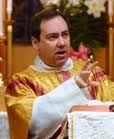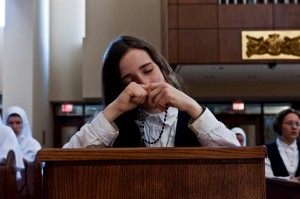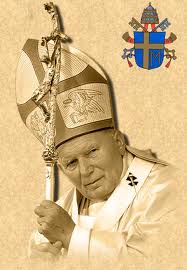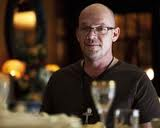 Fr. Z took time out from his Fourth of July holiday to grace his readers with the following top ten list of qualities of prospective priests today:
Fr. Z took time out from his Fourth of July holiday to grace his readers with the following top ten list of qualities of prospective priests today:
1. Prospective priests (Religious or Diocesan) are not looking primarily for community life, as we live it. They are looking for a Church-related mission that they believe in.
2. Prospective priests want to know what the Pope teaches, not what the U.N. teaches.
3. Prospective priests do not want to sit around with older “veterans” and listen to the latter whine about the Pope, Rome and the bishops.
4. Prospective priests are not in favor of women’s ordination. Period.
5. Prospective priests do not want to attend Masses that resemble hootenannies, Quaker meetings, or Presbyterian services.
6. Prospective priests are not ashamed of the Pro-life movement, they’re for it.
7. Prospective priests do not want to hear their brothers mock the Pope and gripe about liturgical norms.
8. Prospective priests do not want to study at theological unions/seminaries that are embarrassed by Catholic teaching.
9. Prospective priests know that Vatican II was not the only, or even the most important, Ecumenical Council.
10. Prospective priests are not embarrassed by Marian devotion, and are seen praying the Rosary.
I think this list is pretty accurate. I would say with respect to point one that prospective priests today tend to be inspired by the call for a “new evangelization.” Some feel a greater need for community life than others. Others who may not have thought much about it before seminary come to recognize the value of some form of community life, even as a diocesan priest.
What do you think of Fr. Z’s list?
 The Catechism of the Catholic Church is often touted as an excellent resource for Scripture study because of the extensive biblical references. I find that the Catechism is also good for word studies as well.
The Catechism of the Catholic Church is often touted as an excellent resource for Scripture study because of the extensive biblical references. I find that the Catechism is also good for word studies as well.
 Earlier this month, fittingly on June 9th, the feast of the holy deacon
Earlier this month, fittingly on June 9th, the feast of the holy deacon  Last week Rorate Caeli published
Last week Rorate Caeli published  The following
The following  This past weekend, awakened by a persistent thunderstorm, I starting browsing Catholic sites and came across two excellent vocation-related blogs not previously mentioned here.
This past weekend, awakened by a persistent thunderstorm, I starting browsing Catholic sites and came across two excellent vocation-related blogs not previously mentioned here. Cardinal Raymond Burke said he thinks often about his humble upbringing in rural Wisconsin and where his Catholic faith has taken him during his lifetime.
Cardinal Raymond Burke said he thinks often about his humble upbringing in rural Wisconsin and where his Catholic faith has taken him during his lifetime. Dennis Narlock has cooked for Hollywood stars and built a well-known local catering business throughout the past three decades. But Narlock plans to walk away from his business and his cooking career at the end of the year. He says he will also give up his personal wealth and all his worldly possessions after joining a recently established Franciscan monastery in the Diocese of Fargo.
Dennis Narlock has cooked for Hollywood stars and built a well-known local catering business throughout the past three decades. But Narlock plans to walk away from his business and his cooking career at the end of the year. He says he will also give up his personal wealth and all his worldly possessions after joining a recently established Franciscan monastery in the Diocese of Fargo.